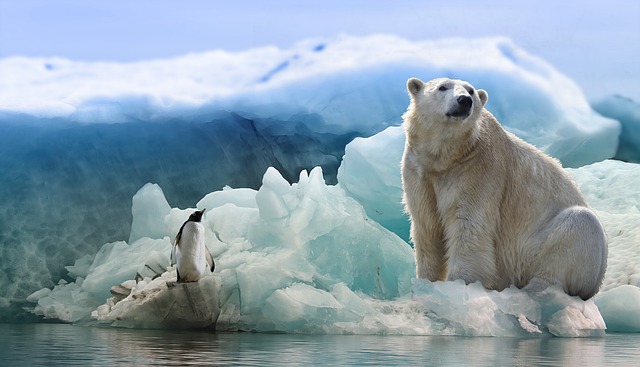
Climate change and the intensive use and destruction of natural ecosystems that drive biodiversity loss across the planet continue to worsen. In this respect, the climate crisis and the biodiversity crisis are often seen as two different and unrelated catastrophes. An international team of researchers demands the adoption of a new perspective. In their study just published in the journal Science, they recommend meeting the 1.5 degree target while protecting and restoring at least 30 percent of all land, sea, and freshwater areas, for which they demand interdisciplinary collaboration between institutions —which usually work independently— in order to urgently transform the current economic and political systems that underlie this double crisis.
Human beings have greatly changed the Earth system. Greenhouse gas emissions generated by human activities have caused the global average temperature to rise by more than 1.1 degrees compared to the pre-industrial era. And every year there are additional emissions of carbon dioxide, methane and other greenhouse gases, currently reaching more than 55 gigatonnes of carbon dioxide equivalent. This unprecedented climate crisis has consequences for the entire planet. Precipitation distribution is changing, global sea level is rising, extreme weather events are becoming more frequent, oceans are becoming more acidic, and anoxic zones continue to expand.
"The climate crisis that Homo sapiens itself has caused is probably the biggest challenge Homo sapiens has faced in its 300,000-year history," says Professor Hans-Otto Pörtner, who works at the Helmholtz Center for Polar and Marine Research and co-chairs since 2015 the Working Group II of the Intergovernmental Panel on Climate Change (IPCC) whose task is to assess the current state of knowledge on the impacts of global warming. Pörtner notes that “another equally dangerous and often overlooked crisis is emerging at the same time: the dramatic loss of plant and animal species across the planet. The two catastrophes – the climate crisis and the biodiversity crisis – are interdependent and mutually complementary and should therefore never be seen as two separate issues." The recently published study in the journal Science details the connections between the climate crisis and the biodiversity crisis and presents solutions to address both catastrophes and mitigate their already enormous social impacts.
The article is the result of an international scientific workshop organized in December 2020 and coordinated jointly by two organizations belonging to the United Nations: the Intergovernmental Science-Policy Platform on Biodiversity and Ecosystem Services (IPBES) and the Intergovernmental Panel on Climate Change (IPPC). Professor Ikerbasque Unai Pascual, from the Basque Center for Climate Change (BC3) and one of the authors of the study, describes the rapidly worsening loss of biodiversity and stresses that "human activities have altered approximately 75 percent of the earth's surface and 66 percent of our planet's marine waters. And they have done so to such an extent that today, for example, approximately 80 percent of mammalian biomass and 50 percent of plant biomass have been lost, and there are more species threatened with extinction than ever before in human history. Pascual adds that "in this regard, global warming and the destruction of natural habitats not only cause the loss of biodiversity, but also reduce the capacity of organisms, soils and sediments to store carbon, which in turn aggravates the climate crisis."
To combat these multiple crises, the researchers who have evaluated the scientific evidence propose an ambitious combination of measures to reduce emissions, restore, protect and intelligently manage ecosystems together with the promotion of inter-institutional capacities among political agents. They also demand that climate change should be addressed while at the same time adopting a modern approach to ecosystem management that stops viewing protected areas as isolated havens for biodiversity. Rather, they argue that protected areas should be part of a global network, both on land and at sea, that interconnects relatively untouched regions through migratory corridors for species. This should also be done by promoting carbon dioxide uptake and carbon sequestration in biomass and soils.
Pascual points out that “the double environmental crisis is already affecting society on many levels, especially worsening the equity and adaptive capacity of societies around the world that are already vulnerable. Protecting against climate change and conserving biodiversity must go hand in hand, and policy interventions that offer social advantages to local communities and indigenous peoples - who have historically contributed to cooling the planet and protecting much of global biodiversity - are needed ".
Hans-Otto Pörtner also calls for the institutionalization of joint global efforts: “It is unlikely that we will achieve the new global biodiversity, climate and sustainability targets for 2030 and 2050 if the different institutions do not collaborate more intensively. Let us take as an example the different UN conventions on biodiversity and protection against climate change, that is, the Convention on Biological Diversity and the United Nations Framework Convention on Climate Change. They approach both crises in an excessively independent way. In this context, we urgently need a global approach if we are still to hope of achieving the goals."
Bibliographic reference: H.-O. Pörtner, R. J. Scholes, A. Arneth, D.K.A. Barnes, M.T. Burrows, S.E. Diamond, C.M. Duarte, W. Kiessling, P. Leadley, S. Managi, P. McElwee, G. Midgley, H.T. Ngo, D. Obura, U. Pascual, M. Sankaran, Y.J. Shin, A.L. Val (2023) Overcoming the coupled climate and biodiversity crises and their societal impacts. Science, 380, eabl4881. DOI: 10.1126/science.abl4881.
.png)
